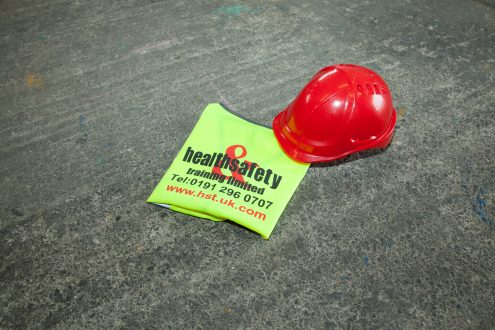How to Avoid Electrocutions at Work
Almost every workplace relies on electricity to function productively, from IT equipment in offices to power tools on building sites. Although most of the time, electrical equipment is perfectly safe, electrical shock injuries and electrocutions are always a risk and must be protected against to ensure the safety of employees and visitors.
Every year, around 1000 electrical injuries are recorded, and about 30 of these are fatal. Fatal accidents are most commonly caused by exposure to overhead or underground power lines.
What are the risks?
Electricity presents a risk to anyone who is exposed to any ‘live’ parts. Exposure can be direct, or indirect such as touching a conducting object or substance.
Electric shocks can cause burns and permanent injuries as well as secondary injuries caused by falls or collisions resulting from the incapacitating effects of a shock.
Faulty electrics can also cause fires, that present a whole new level of risk for employees, visitors and premises.
Who’s responsible?
Employers have a legal duty of care to protect their employees and members of the public that could be at risk under the Health and Safety at Work Act 1974. Alongside this, specific legislation in The Electricity at Work Regulations 1989 add additional obligations in relation to the use of electricity and electrical equipment within the workplace. This includes:
- Ensuring electrical systems are constructed in a way that prevents danger
- Ensuring electrical systems are maintained as necessary to prevent danger
- Ensuring electrical systems are worked on in a way that prevents danger
Only workers with adequate knowledge or experience should be allowed, or expected to work with electrical equipment and additional considerations should be made if the equipment is being used in hazardous environments, such as severe weather conditions.
Any accident or injury involving electricity should be properly reported by the employer in line with The Reporting of Injuries, Diseases and Dangerous Occurrences Regulations 1995 (RIDDOR).
3 ways to reduce the risk of electrocution
1. Servicing
The most effective way to limit the risks associated with electrical equipment is to ensure it is properly maintained and regularly serviced. Portable appliances should be PAT tested every year by a qualified electrical engineer. Electrical systems, such as lighting systems and cabling networks, as well as larger equipment and machinery should be inspected in line with the manufacturers’ recommendations.
This will not only ensure any potential issues are identified and rectified before they present a hazard, but proper servicing records will protect you in the event of an accident as you will be able to evidence that you have taken the necessary steps to ensure safety as required.
2. Cleaning and Maintenance
One of the most common causes of electric shock is lack of care when cleaning or maintaining electrical equipment. However, this is extremely easy to avoid – you simply need to ensure that all electrical equipment and machinery is switched off and all power sources are unplugged.
This should be the very first step when cleaning or maintaining any equipment, appliances or devices. Warning signs can be used to remind workers to do this before the initial maintenance inspection takes place.
3. Avoiding Water
Water is a conductor of electricity, so it increases the risk of electrocution. It’s essential that you ensure all surfaces and work areas are dry when working with electricity and electrical devices or appliances.
If this can’t be avoided, rubber gloves and boots should be used to reduce the intensity of an electric shock. Appliances, tools and equipment used in wet areas should always be plugged into a GFCI outlet, or should be used with a GFCI extension cord which will prevent electrocution.
Risk Assessments
The most important thing you can do as an employer is to carry out an effective and thorough risk assessment.
In certain environments, assessing the risk of electrocution is vitally important. For example, if your staff work on mobile elevated platforms or cranes that could come into contact with overhead power cables, or if they are carrying out groundwork in an area that has underground power lines, you will need to plan any work or tasks in a way that eliminates, or at least greatly reduces the risk of electrocution.
Appropriate training is required for those who carry out the work, such as operator training courses and general health and safety courses. As an employer, you can also provide training for members of your staff to undertake risk assessments, ensuring there is someone on site that can assess the work as it is ongoing and has the authority to halt work should the situation become hazardous.
Article provided by Health and Safety Training Ltd.
The cost of forklift accidents for UK businesses Builder fined for failing to ensure safety of employee





